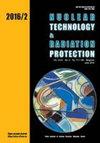气候、建筑和居住因素对黑山地下住宅氡水平的影响
IF 0.9
4区 工程技术
Q3 NUCLEAR SCIENCE & TECHNOLOGY
引用次数: 0
摘要
在用CR-39探测器进行了长达一年的测量后,在953个家庭(占黑山所有常住住宅的0.5%)中进行了全国范围的氡调查。采用描述性、单变量和多变量分析方法,分析了面积、气候、房型、建筑年份、地下室、底板、楼层数、建筑材料、窗框、供暖和吸烟等11个因素及其35个类别对732个住宅地下氡浓度的影响。单因素分析排除了加热和吸烟这两个因素的影响。报告显示,平均而言,在城市和农村地区、家庭住宅和公寓楼、有和没有地下室的房屋以及有木制和聚氯乙烯/铝窗框的住宅中,底层住宅中的氡浓度在95%的置信水平上存在差异。Cf气候带不同于Cs和Df气候带。只有两对建筑时期的住宅平均氡浓度不同:1980-1999年与1900-1944年和1964-1979年。一层、两层或三层的房屋的平均氡水平几乎相同,高于三层以上的建筑物。石质房屋的氡浓度平均值高于混凝土、砖或木质房屋。多变量分析显示,面积、气候、房屋类型、地下室的存在、楼层数和建筑材料这六个分析因素同时与黑山一层住宅中的氡浓度有显著关系(p < 0.05)。本文章由计算机程序翻译,如有差异,请以英文原文为准。
Influence of climate, building and residential factors on radon levels in ground-floor dwellings in Montenegro
After year-long measurements with CR-39 detectors, nationwide radon survey was performed in 953 homes - 0.5% of all permanently inhabited dwellings in Montenegro. Influence of 11 factors (area, climate, type of house, year of construction, basement, foundation slab, number of stories, building materials, window frames, heating and smoking) and 35 their categories on the radon concentrations in 732 ground-floor dwellings was analyzed using descriptive, univariate and multivariate methods. Univariate analysis dropped influence of the two factors - heating and smoking. It reveals that, on average, radon concentrations in ground-floor dwellings differ at 95% confidence level in urban and rural areas, in family houses and apartment buildings, in houses with and without basement, and in dwellings with window frames made of wood and PVC/Al. In Cf climate zone they differ from those in Cs and Df zones. Only two pairs of construction periods differ in mean radon concentrations in dwellings: 1980-1999 with 1900-1944, and with 1964-1979. Houses with one, two or three stories have almost equal average radon levels, which are higher than in buildings with more than three stories. Mean value of radon concentrations in houses made of stone are higher than in houses made of concrete, or bricks, or wood. Multivariate analysis revealed that six of the analyzed factors - area, climate, type of house, presence of basement, number of stories and building materials simultaneously have significant relationships (p < 0.05) with radon concentrations in dwellings on ground floor in Montenegro.
求助全文
通过发布文献求助,成功后即可免费获取论文全文。
去求助
来源期刊

Nuclear Technology & Radiation Protection
NUCLEAR SCIENCE & TECHNOLOGY-
CiteScore
2.00
自引率
41.70%
发文量
10
审稿时长
6-12 weeks
期刊介绍:
Nuclear Technology & Radiation Protection is an international scientific journal covering the wide range of disciplines involved in nuclear science and technology as well as in the field of radiation protection. The journal is open for scientific papers, short papers, review articles, and technical papers dealing with nuclear power, research reactors, accelerators, nuclear materials, waste management, radiation measurements, and environmental problems. However, basic reactor physics and design, particle and radiation transport theory, and development of numerical methods and codes will also be important aspects of the editorial policy.
 求助内容:
求助内容: 应助结果提醒方式:
应助结果提醒方式:


